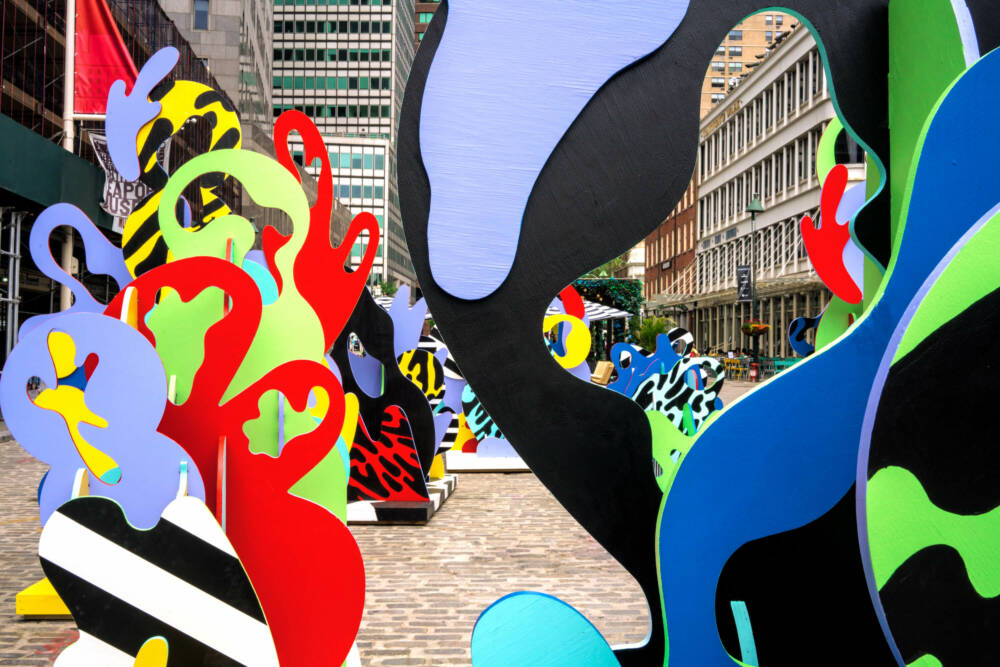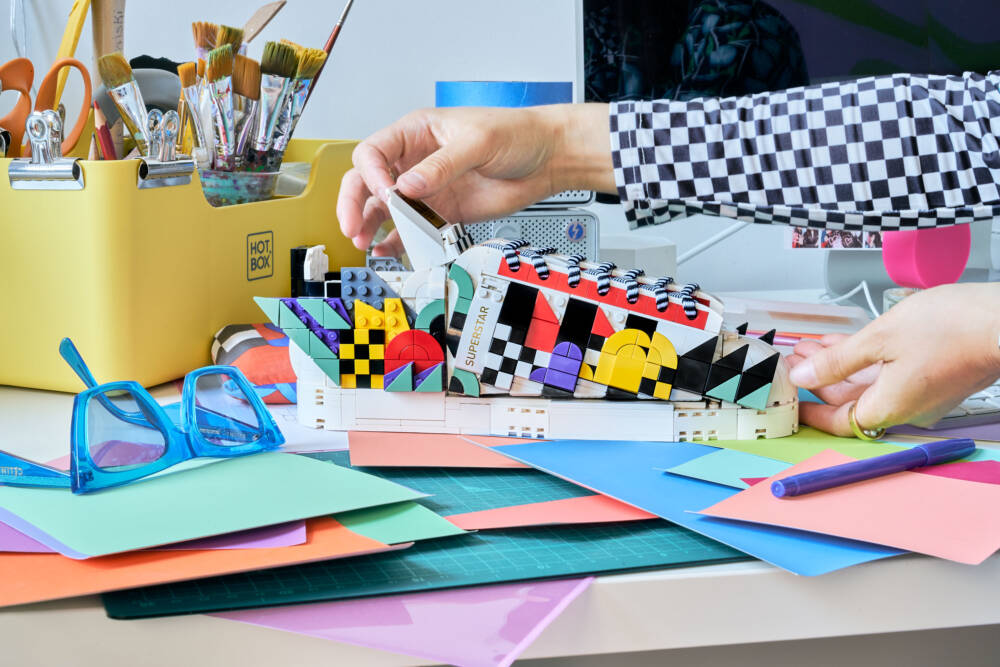Explore the World of Color with Wade & Leta
How do Wade and Leta make music for your eyes? What drives them to keep trying new things, and how did they get to this point? Having started as graphic designers, Wade & Leta did not stop there. The couple and their work are constantly adapting, changing, and striving for the next new thing, and thankfully they have no plans to change that or stop anytime soon. Explore their world of Color, Movement, and Emotion using all possible disciplines of design, art, fashion, and architecture. In this conversation with Wade and Leta, you’ll find in-depth answers about your favourite dream team.
Wade & Leta will speak at the Forward Festival Berlin in September. Next to them, you will be able to hear Creatives like Alice Isaac, Anna Ginsburg, Grilli Type and many more.

You guys seem to illuminate everything around with the most progressive and diverse ideas, combining the various forms of expression from brand design and content strategy to photography and motion direction. Do you consider them all interchangeable?
For us to be invigorated we need to keep doing something new. We feel energized when we learn and develop what we want to do and who we collaborate with, and we have come to the conclusion that it is important to keep pushing to make new things – whatever the outcome. If we can’t do it with client work, we’ll do it with our own personal work in order to continue to progress. With the ability to learn at any time by just Youtubing something – there is no limit to keep pursuing something new.
While cruising across your profile, these expressions have particularly struck a chord with us: body sculptures, surreal compositions and color obsession. How do these components inscribe your oeuvre?
We believe that color is a vessel for joy, and no matter what we create, we want to apply that ethos in everything we create. When we take a step back from work, we want to make sure that this is holistically expressed in all our work.
Can you talk about why you’re drawn to particular facets in your practice and how your approach to it might’ve changed over the years?
We were both trained as graphic designers and began the studio as such. However, we have realized that we are people who ignite when we are trying something new. Our collaboration started early in our relationship as a photo project to pair with our relationship, which we called Complements.
We both sat in front of and behind the lens and created surreal scenarios together. It was a way for us to better understand each other and improve ourselves in photography.
In doing so, we realized that we really are people who want to touch everything and we saw no reason why we could not do that. We think it is important to think about what you want to achieve in the short and long term, and based on these assessments, figure out how to achieve it. It was clear to us that we didn’t just want to do graphic design (and not just photography either!), but that we wanted to move towards artistic expression, and so we slowly started making work that reflects that.

In 2021 you highlighted some influential moments in design history in collaboration with Adobe. What movements or personalities from the past influenced your work?
Our collaboration with Adobe served to spotlight our studio and help Adobe educate its community about a particularly influential moment in design history. Quite fittingly, we helped them tell the story of the Memphis movement which had arisen in the 1980s under the wing of Italian post-modern design godfather Ettore Sottsass. We were honored to talk about this design legacy and the resurgence of its recent popularity, as we are big fans of his work and the other members of the Memphis movement he fostered. But that’s not all – we are fans of design, art, fashion and architecture in many ways, and we often look at all facets when seeking inspiration.
What could we imagine your mood boards to look like? Do you collect some materials, images or other fragments that inspire you?
Our moodboards are filled with pictures taken on our phones from our books and travels. They include lots of sculptures and imagery from vintage Japanese catalogs, logo books and architectural monographs. We try to go to first hand reference before looking anywhere else, since online moodboarding with algorithms can tend to lead to directions that won’t push you. Moodboards for us become wormholes of research, and we’ll end up spending days learning about niche architects that designed 5 buildings in their careers, or fashion designers who invented revolutionary techniques for treating their fabrics.
Some subtle hints of humor and sarсasm run through your artworks. Could you talk more about this balance between fun and seriousness and how it manifests itself in your collaborations?
Life is too short to always be serious! We find that we can be a bit more tongue-in-cheek with our photography work because expressiveness can be easily emoted with humans and recognizable objects. We appreciate that the clients we work with are open to these twists (a term we’re always discussing with our clients) and we tend to collaborate together on how to create these conceptual stories that beg for made-you-look moments.

When creating do you have a goal in mind or does that come with the process?
Thankfully we are typically given good challenges within our projects. Lately, we’ve taken over a one-story building, and we’ve created five 10-15 foot tall sculptures with the goal of making them look precariously balanced and on the brink of collapse. Our challenges are often presented in simple terms, and it’s up to us to create a greater story about how the project can evolve. We always want to go above and beyond, and sometimes give ourselves greater challenges than we’re meant to, but it’s all in pursuit of creating something new.
Deftly playing with color, you make a sort of a statement while working with hues and tints in unexpected ways. Do you elaborate on personal issues through these colorful narratives?
This is really interesting and something we don’t usually focus on. We know that there have been artists in the past who have had “color periods” and are aware that this is dangerous and uncomfortable territory for some. For us, however, it is more important to create combinations in our color choices that represent an evolution or are completely new compared to anything we have done before. Our palettes are a balance of temperatures and contrasts, as we always check to combine hot colors with cool colors and dark tones with light ones sufficiently.
Could you tell us about the most significant outcomes or unforeseen reactions you have received due to socials, media exposure or directly from the clients?
When our early Complements project was revealed, it was highlighted by @instagram in its very early days, when the feed was still simply chronological. We remember sitting in a restaurant in Chinatown and watching the numbers climb as we ate lunch, incredulous that such a thing was happening. It led to a great amount of coverage as well as an article about us in the New York Times Style section. Despite happening so early in our careers, it certainly was a pinnacle point for us with our social media presence.
Is there any dream project, exhibition or collaboration you would want to work on or with and why?
Our dream is to create a public playground that is designed for both adults and children alike. It is a project that would be legally difficult. As there are an unbearable amount of laws when designing it, but restriction brings insight, so we are open to the challenge.

Wade & Leta will speak at the Forward Festival Berlin in September. Next to them, you will be able to hear Creatives like Johanna Jaskowska, Fons Hickmann, Cihan Tamti and many more.